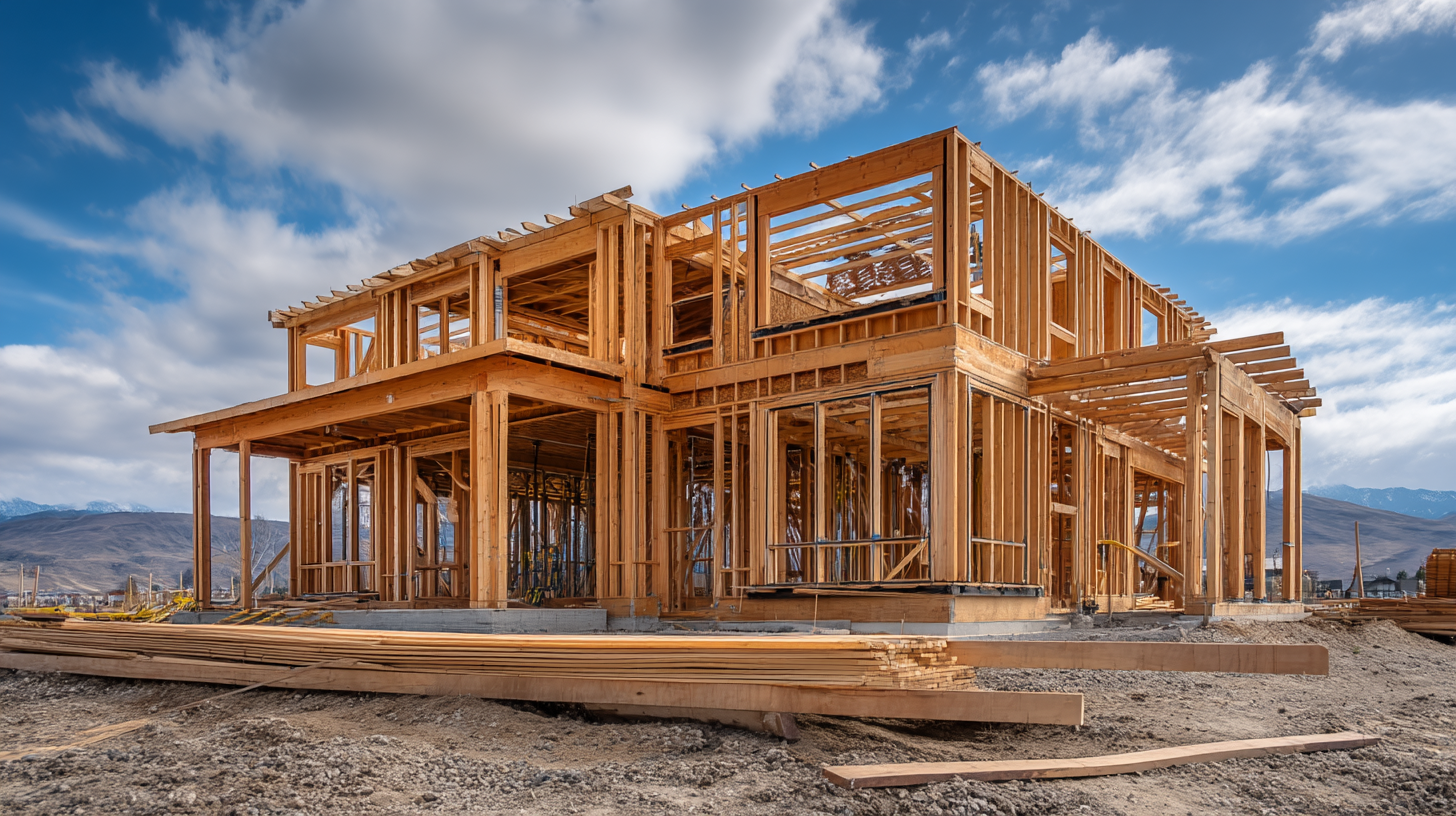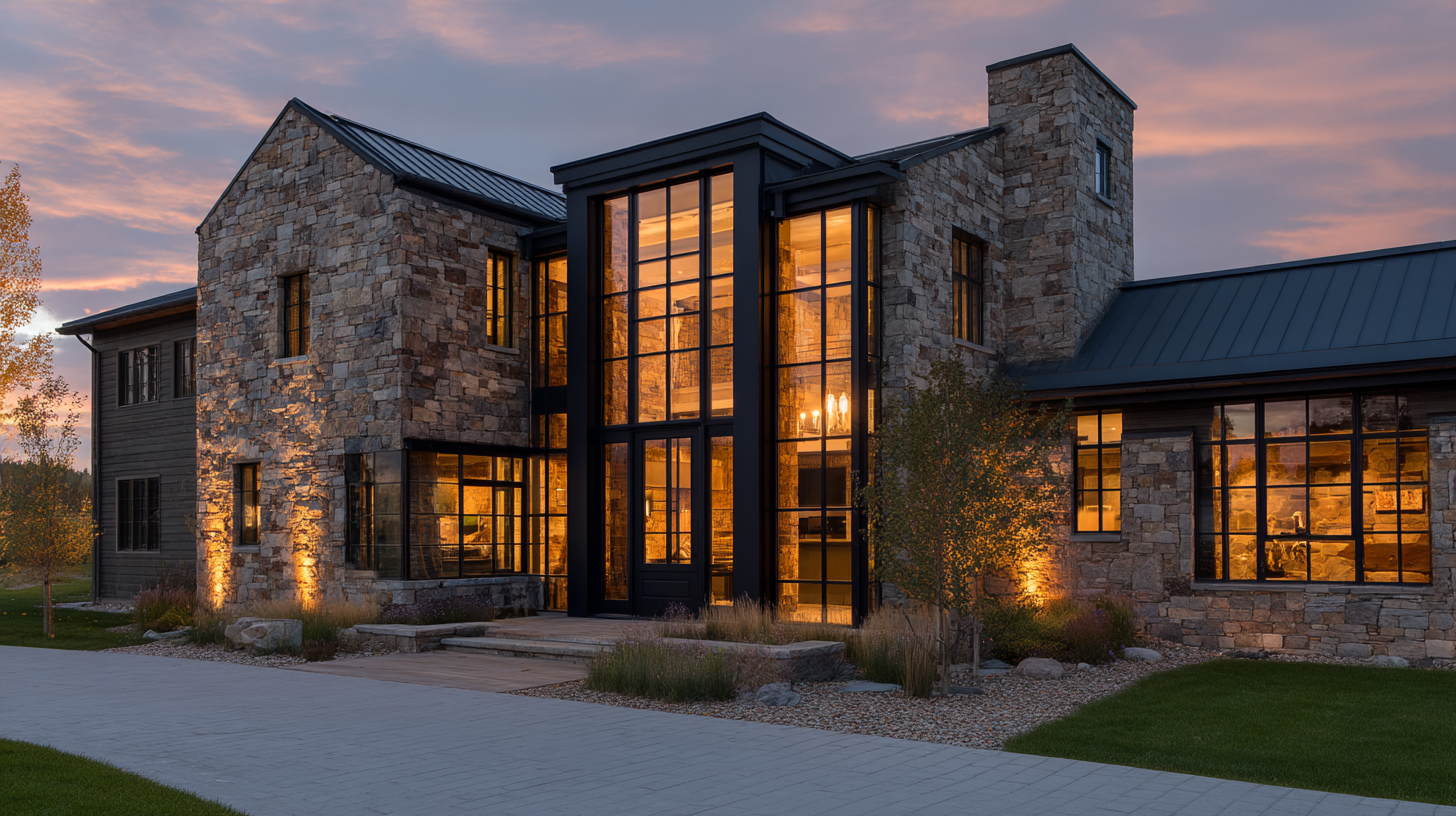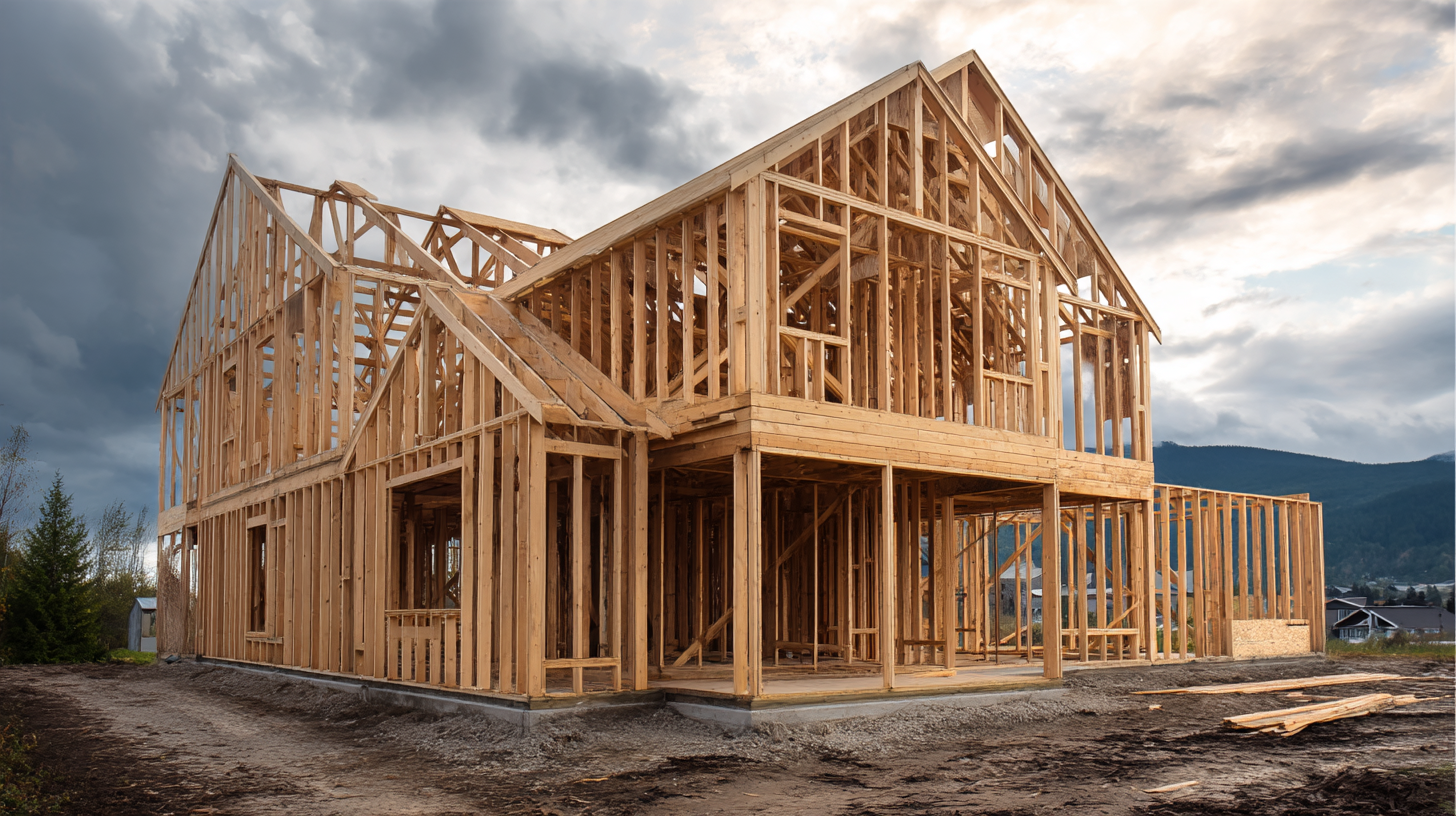Partnered with #1 ADU Builders
Contact Golden State
Drop us a line! We look forward to discussing your next project with you!
Cut the chase! Schedule a face-to-face virtual meeting with us today to dive into your project's next steps.
For our returning clients, experience our streamlined, contact-free project proposal process. Simply fill out our short project questionnaire, and we'll deliver your project proposal within 72 hours.
Contact Us:
Follow Us:

- Golden State Design & Engineering
- Comment 0
Is It Cheaper to Build or Remodel a Home in California? Here Is What You Need to Know
In California high construction costs make the question is it cheaper to build or remodel a home very important for many homeowners considering a new home or renovating an existing home. Whether you are exploring new construction project or renovation projects, understanding the overall cost vs long term value is critical. At Golden State Design & Engineering we help you compare building a new home vs renovating an existing structure so you can make a cost effective decision based on your goals, budget, and the existing space you have.
Understanding the Real Costs: Build vs Remodel in 2025

What Does It Cost for New Construction Project in California?
When you choose building a new home or starting a new construction project in California in 2025 you are committing to very visible expenses. For a new house typical construction project in many parts of California costs between $200 to $400 per square foot depending on location and finish levels, sometimes more for more complex scope or high end finishes. In expensive metro areas costs can climb even higher.
A new build or new construction project also includes other necessary costs beyond just the building materials and labor costs. You must budget for land acquisition, site preparation, foundation work, utility hookups, architectural and structural design, civil engineering, permits, inspections and code compliance with safety codes. These building elements add up fast when you build from scratch.
What Does It Cost to Remodel an Existing Building or Existing Home?
In contrast when you are renovating an existing building or renovating an existing home, costs per square foot are lower in many situations, especially if the scope is moderate. Full home remodels or large remodeling projects may run between $100 to $250 per square foot in many California regions depending on the finish, layout changes, and how many upgrades are needed.
However renovation projects carry risks of unexpected issues: old wiring, plumbing, structural weaknesses, or foundation work may be required; you may need to bring up parts of the existing structure to current safety codes and energy efficiency standards. These hidden costs can erode savings if they are not anticipated in the plan or budget.
What Has Changed in 2025? Materials, Labor Costs, Regulations
In 2025 California continues to see labor costs rising as skilled trades are in short supply. Material prices remain elevated, especially for items like steel, lumber, insulation, windows and energy efficient systems. Permitting has become more time consuming and stricter codes, especially for energy efficiency and seismic safety, increase cost when renovating or building new.
Regulations matter, for example California’s “50% Rule” means that major remodels above that threshold are treated almost like a new construction project for code compliance, triggering upgrades and cost increases. Renovating and new construction both must navigate these rules carefully.
Key Factors That Strongly Affect Whether Building or Remodeling Is More Cost Effective

To determine whether building new or remodeling existing structure makes more financial and practical sense you must weigh several factors, many of which play a significant role in the financial sense of your project.
Age, Condition, and Character of the Existing Building
If the existing building or existing home is old, with poor foundation, failing systems, or non‑compliant structure, upgrading can become expensive. When old house issues like foundation work, outdated wiring, or dangerous materials are present, the cost to repair or renovate can be close to that of building a new house, with fewer performance guarantees. If instead the structure is sound, a remodel may be far more cost effective.
Also if the home has unique character or features worth preserving that align with your design preferences, renovating existing space may allow you to retain character while updating comfort and modern amenities.
Desired Location, Layout and Space Goals
Space, flow, layout, orientation and location are major factors. If you love your current location but the existing space does not fit your needs, a layout change, addition, or remodel might serve. But if you need a big change in layout, square footage, or want new energy efficiency, building new gives you complete control over all aspects from ground up.
Having your dream home in your desired location sometimes means remodeling is preferred if the land is already owned, zoning allows, and you are willing to adapt to constraints of the existing building. For more ambitious growth in living space or adding new wings or outbuildings, new construction or a new build may be the better route.
Construction Team, Building Materials, Contractor Scheduling
The construction team you hire, the cost and availability of building materials, and contractor scheduling all affect cost heavily. In times of labor shortage or supply chain delays construction begins later than planned, delays add cost. Material choices vary widely: modern materials and finishes increase cost, while standard materials cost less. If lead times are long, you may need to leave room in your schedule and your budget for delays.
The most influential factors in any construction project include how well the team estimates risk, how skilled contractors are, and how accurately you plan for contingencies for unexpected issues and for building elements like foundation or structural upgrades.
Hidden Costs and Savings Opportunities: What to Watch Out For

When comparing new home vs renovating existing home or building new, there are hidden costs and savings opportunities in both paths, and recognizing them can shift which option is more cost effective.
Unforeseen Expenses in Renovation Projects
Renovating an existing home frequently involves unexpected issues, like rot, mold, old plumbing or wiring, or poor foundations. These may require foundation work or structural reinforcement to meet current safety codes. Because renovation projects are working within an existing structure, surprises are common and can raise overall cost significantly. Leaving a contingency budget of 10‑20% is wise for renovation projects.
Long‑Term Value of a New Construction Project or New Build
When you are building a new home you get the benefit of systems that are new, energy efficiency built in, modern amenities integrated, and lower maintenance in early years. These advantages often increase property value more predictably. New construction may cost more upfront but its long‑term performance in energy efficiency, durability, and fewer repairs often make it a better investment for many homeowners especially if you plan to stay many years.
Financing, Tax, Insurance and Permit Costs
Another important factor is how permits, financing, and tax incentives work. In some cases renovating current home allows maintaining property tax base, but a new construction can trigger reassessment. Insurance premiums for existing building vs new construction vary. Permit fees for building new often higher, but the cost of bringing an older home up to code may also drive permit costs high for renovating. Incentives for energy efficiency or sustainable materials may also offset some costs in both scenarios.
When Building a New Home Makes More Sense
Building a new home or launching a new construction project tends to make more sense when certain conditions apply.
- When your existing structure is in poor condition or needs foundation work or major structural corrections, the cost of renovating may approach or exceed building new.
- When you already own land, or can purchase suitable land, building a new house or new build gives you more freedom to design the layout, orientation, energy efficiency, modern amenities, and performance.
- When you prioritize long‑term savings over immediate cost, new construction often gives you lower maintenance, better energy efficiency, higher resale property value.
- When your design preferences include customization options, complete control over materials, finishes, flow, and the clean slate that building a new one gives, building new often wins.
- When local zoning, setbacks, and codes make renovating existing home very restrictive or costly, building new can offer fewer surprises in the long run.
When Remodeling Existing Home Is the Smart Choice

There are many cases where renovating an existing building or existing home is the better, more cost effective route.
- When the existing home has good bones, the foundation is solid, and structural systems are adequate, you may simply renovate parts of the house and save significant cost.
- When you love your current location, neighborhood, schools or amenities but the new space you want is moderate or limited, renovation or addition could deliver the upgrades you need without paying for new land or full new construction.
- When budget is limited or financing for a full new build is difficult, renovation allows you to spread cost over time or focus first on high‑impact areas like kitchens, bathrooms, or layout improvements.
- When the existing home has character or history you value, renovating existing space preserves charm and uniqueness.
- When you want to minimize disruption and reduce time until you enjoy improved living space, remodeling may be less time consuming than starting a new construction project from scratch, depending on complexity.
Case Studies: Real California Examples of Building New vs Renovating Existing Home
Here are two examples of how families or homeowners compared costs, benefits and outcomes in specific situations so you can understand how theory meets reality.
Example: Custom New House in Northern California
A family in El Dorado Hills embarked on building a new custom home on a sloped lot with views. They had to contend with steep terrain, soil retaining walls, full foundation work, custom roof design, and stringent energy efficiency and safety codes. Though costs for land, grading, foundation and permits were high, the end result was a home built from scratch to their design preferences, with optimal layout, modern materials, high performance HVAC, and low maintenance needs. The total cost per square foot was higher than a comparable remodel, but the new house boasts higher resale value and lower operating cost over time.
Example: Renovating an Existing Home in the Bay Area
Another homeowner in the Bay Area purchased an old house that was structurally solid but dated in layout and finishes. They undertook a renovation project that included opening walls for better flow, upgrading to energy efficient windows, replacing old plumbing and electrical, installing modern amenities, and remodeling kitchen and bathrooms. Because the foundation and framing required little change, and existing permits were manageable, they kept unexpected issues modest. The existing home ended up with greatly improved property value and comfort, at a fraction of the cost of building a comparable new construction, though some upgrades still stretched the budget.
Frequently Asked Questions
Is it always cheaper to remodel than to build new?
Generally speaking no, it is not always cheaper. It depends heavily on the condition of the existing building, the complexity of renovation, building materials chosen, labor costs, desired location, building a new one, energy efficiency upgrades, unexpected issues and how much modernization you want.
Can I live in my home during remodeling projects?
In many cases yes if scope is limited, but in more complex scope or renovation projects involving structural work safety codes, or utilities overhaul you may need temporary relocation.
How do I know if my existing home is worth renovating vs building new?
Hire inspectors and structural engineers, estimate how much foundation work or code upgrades are needed, consider how much you care about maintaining the existing home vs getting full control over layout, materials, energy efficiency, modern amenities.
How long does a new construction project vs remodel take?
Remodeling projects often take between 3 to 9 months depending on complexity and how many unexpected issues arise. New construction projects or building a new home typically take 9 to 18 months or more depending on permits, site work, contractor scheduling.
Do I need permits if I remodel existing structure?
Yes when you are renovating significant parts of an existing space you will need permits, sometimes full code compliance, especially if you cross thresholds like California’s 50% Rule, requiring safety codes, energy efficiency updates and permit and plan reviews similar to those for building new.
Conclusion: Your Next Step Toward a Smarter Decision
Deciding whether building a new home or renovation of your existing home is more cost effective requires careful evaluation of your budget, condition of the current home, your goals for space, layout, modernization and long term value. There is no one‑size‑fits‑all answer, but by understanding building materials, labor costs, unexpected issues, constructing timeline, permits, energy efficiency and your desired location you can choose the option that makes most sense.
At Golden State Design & Engineering we are ready to help you assess your specific situation, weigh pros and cons, analyze cost vs benefit, and create a plan whether you are renovating existing building, or building a new one. Talk to our construction team and design experts today to get clarity on the best path for your project.
#NAICS’s:
- 541310 Architectural Services &
- 541330 Engineering Services
DUNS NO:
- 119132267
#SIC’s
- 8712 Architectural Services &
- 8711 Engineering Services
Cage #
- 9R4L5
#UNSPSC’s:
- 81101500, 81101502, 81101505, 81101508, 81101526, 81101533, 81101522

